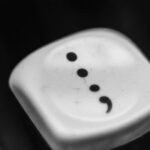
How to Use Ellipses in Writing (With Examples)
Ellipses, also known as “dot, dot, dot,” are a type of punctuation with many purposes. In this guide, we explore what ellipses are and how you can help your clients make the most of them in their writing.
What Is an Ellipsis?
An ellipsis is a form of punctuation consisting of three dots (or periods):
To be or not to be …
Ellipses create a longer, less abrupt pause than other forms of punctuation, such as dashes, colons, and semicolons. Writers can use them to:
- Indicate hesitation
- Imply that a speaker wants to avoid certain words or leave them unspoken
- Build suspense
- Represent an omission in quoted text
Ellipsis and ellipses both refer to this type of punctuation, but ellipsis is singular, and ellipses is plural.
For example, this sentence contains an ellipsis:
He must have left … about an hour ago.
And this sentence contains multiple ellipses:
He must have left about an hour ago … I think … or maybe earlier …
Formatting Ellipses
You can format ellipses in several ways:
- With one space before and after the ellipsis:
This is one way … to format an ellipsis.
- With one space before the ellipsis, after the ellipsis, and between each dot:
This is another way . . . to format an ellipsis.
- With no spaces before or after the ellipsis or between each dot:
This is a third way…to format an ellipsis.
- With one space between each dot but no space before or after the ellipsis:
This is a fourth way. . .to format an ellipsis.
The way an author formats and spaces ellipses will depend on their preference and the style guide they are using.
As a proofreader, you’ll need to make sure that your client has formatted ellipses consistently and followed the rules of their relevant style guide.
Using Ellipses in Fiction
In fiction, authors often use ellipses to convey or represent uncertainty, hesitation, and thoughts that trail off. Ellipses are most commonly found in dialogue but can also appear in the narration itself:
She appeared wearing a neon green and pink hat. “Oh,” said her mother, “that looks … nice.”
“I just wanted to say … that …” His voice faded out.
There was nothing else they could do …
Authors also use ellipses to create suspense by delaying the revelation of certain information:
It almost looked like … no, surely it couldn’t be …
They peered out of the dark window and saw … no one at all.
While ellipses can be a useful tool, they shouldn’t be overused. Too many ellipses can weaken their dramatic effect and make the text difficult to read.
Using Ellipses in Quotations
In formal writing, journalism, and academic texts, writers often use ellipses in direct quotes. The ellipses show that the writer has omitted words or sentences because they aren’t relevant or make the quotation less concise.
For example, take this original quote from author Ursula K. Le Guin:
“A writer is a person who cares what words mean, what they say, how they say it. Writers know words are their way towards truth and freedom, and so they use them with care, with thought, with fear, with delight.”
We could shorten this quote by removing “Writers know words are their way towards truth and freedom” and replacing it with an ellipsis:
“A writer is a person who cares what words mean, what they say, how they say it … and so they use them with care, with thought, with fear, with delight.”
You should remove any punctuation on either side of the ellipsis unless it’s grammatically necessary.
When your client has used an ellipsis to omit part of a quotation, you’ll need to make sure that the remaining sentence is grammatically correct. The quoted text should read smoothly, as if your client removed nothing. The following example would not be correct:
“A writer is a person who cares what words mean, what they say, how they say it … use them with care, with thought, with fear, with delight.”
If your client has introduced errors by using ellipses in a direct quote, you may not have access to the full quotation and therefore may not be able to fix the issue yourself. When this happens, you should leave a comment for your client, explaining the issue.
When you use ellipses to indicate omissions in quoted text, you can present the ellipsis in square brackets: […]
This formatting isn’t always necessary but can help prevent the ambiguity that occurs when writers use ellipses within one passage to indicate both omissions and uncertainty. Your client’s style guide may also recommend using square brackets with ellipses in this way.
Becoming A Proofreader
Our Becoming A Proofreader course will teach you everything you need to know about punctuation (as well as grammar, spelling, capitalization, and more … ). Explore what we can offer by signing up for a free trial.





Your email address will not be published.